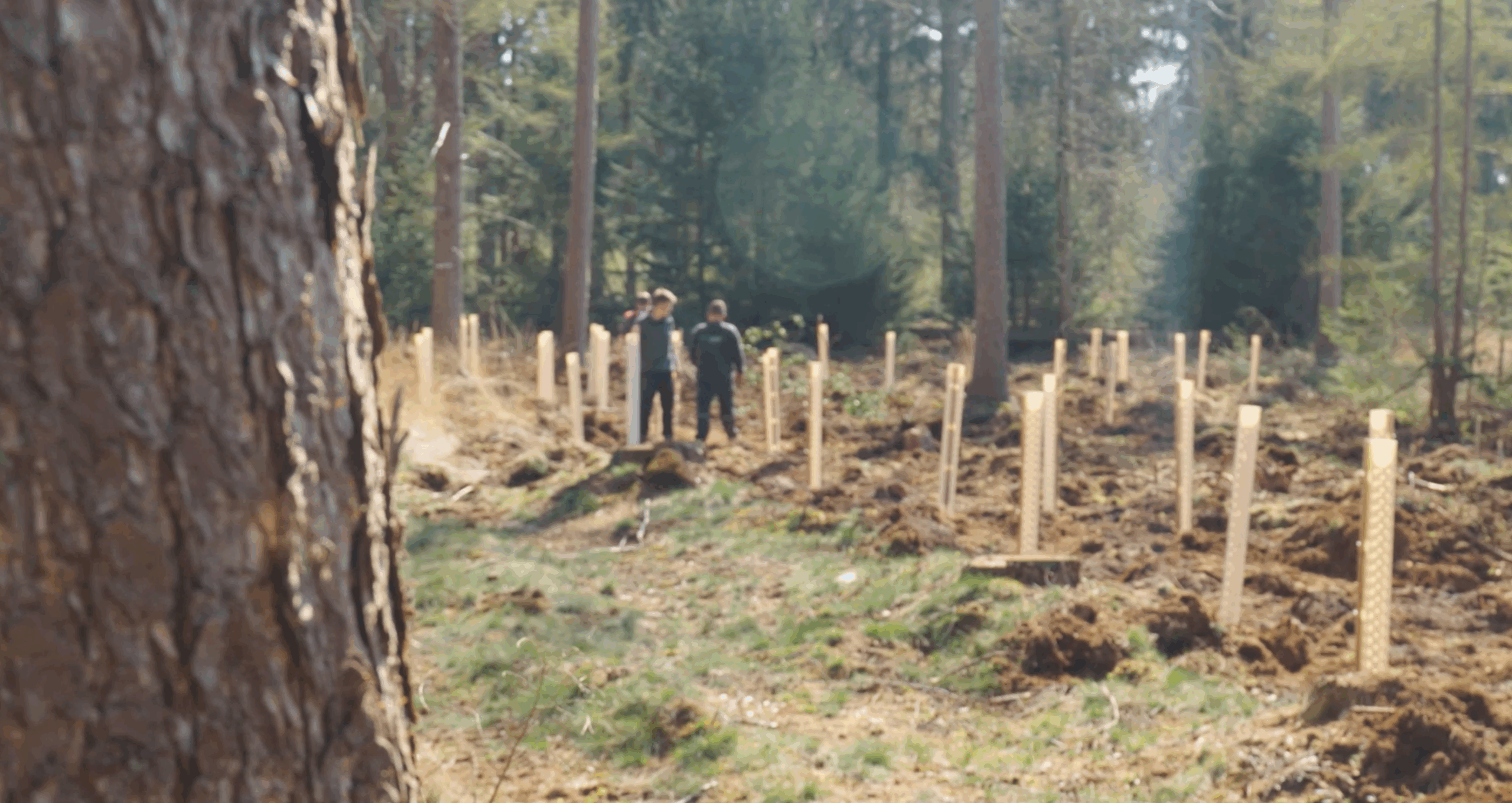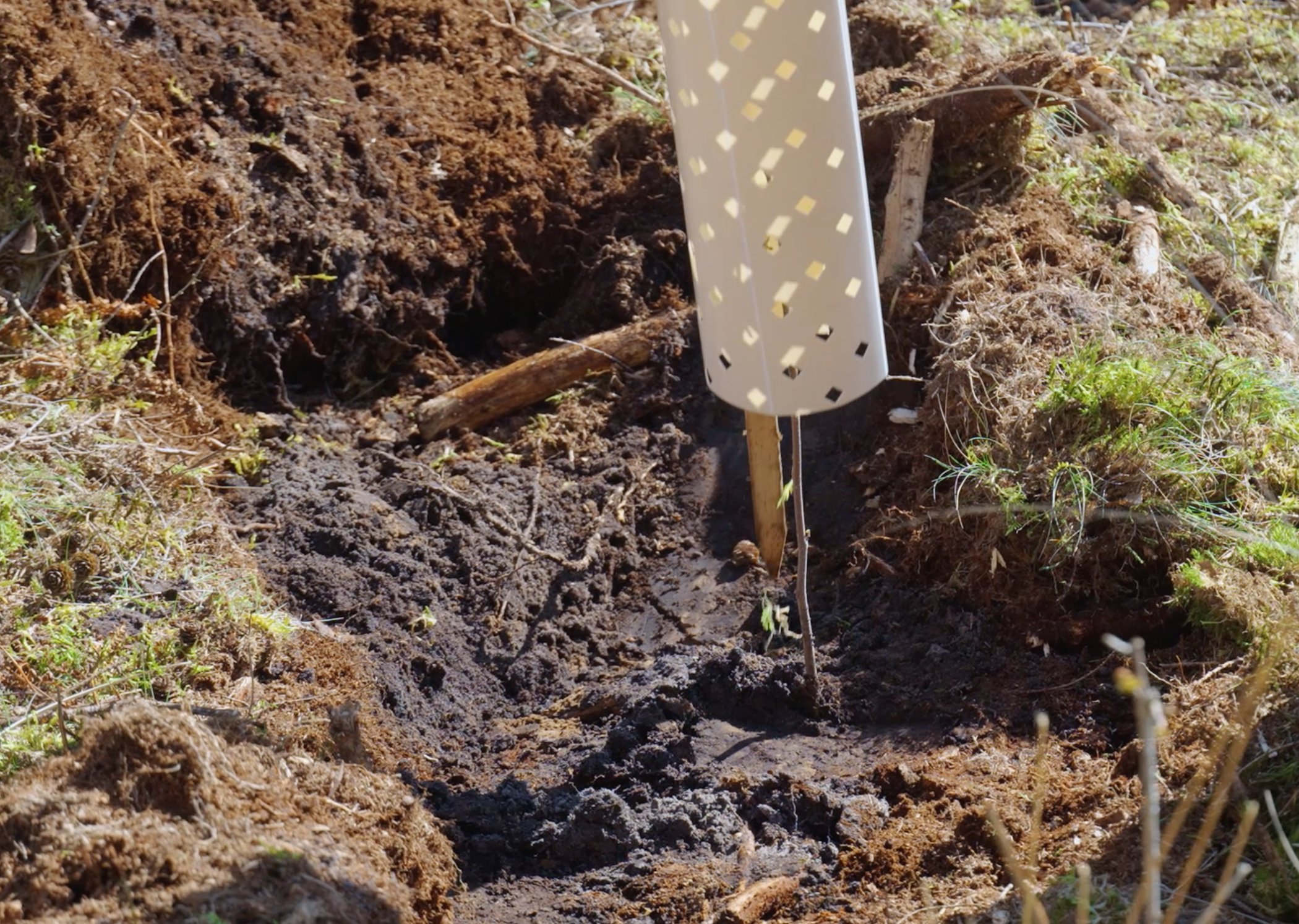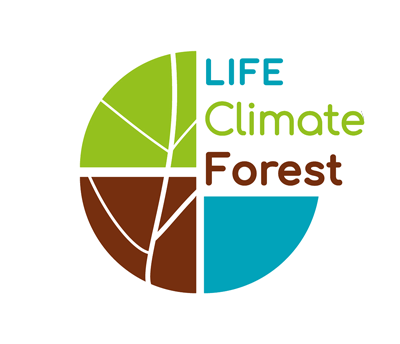

Trial of biodegradable wildlife barrier
Our forest ecosystems are fragile. Continuous forest rejuvenation is an important means of increasing forest resilience. Through natural selection, only the best traits remain in the rejuvenation, allowing the forest to adapt to changing conditions.
It is just difficult to get that rejuvenation off the ground. The main reason: damage to the saplings by wildlife such as deer, roe deer, boars and hares. Excessive wildlife population negatively affects forest structure, species composition and forest rejuvenation. In particular, young deciduous trees fail to develop. As a result, some tree and shrub species become dominant in the forest.
To prevent wildlife damage, it is therefore necessary to take measures. In practice, forest managers currently apply a variety of protection measures. But which protection is the best?
Within project LIFE Climate Forest, we offer managers the opportunity to (show) the different types of protection side by side. A good example is Bosgroep Noord-Oost Nederland's current trial of biodegradable wildlife protection in demo forest Boschoord.
The producer of the protection (GreenSecure) made a video of this in collaboration with manager Lars Visser (Bosgroep Noord-Oost Nederland). Obviously to promote their product, but it is certainly an interesting story in the context of the search for appropriate protection against wildlife damage.
For those who want to read more about our quest for protection: Julian Pijls of Bosgroep Zuid Nederland wrote an article about it earlier (Nature Today).


